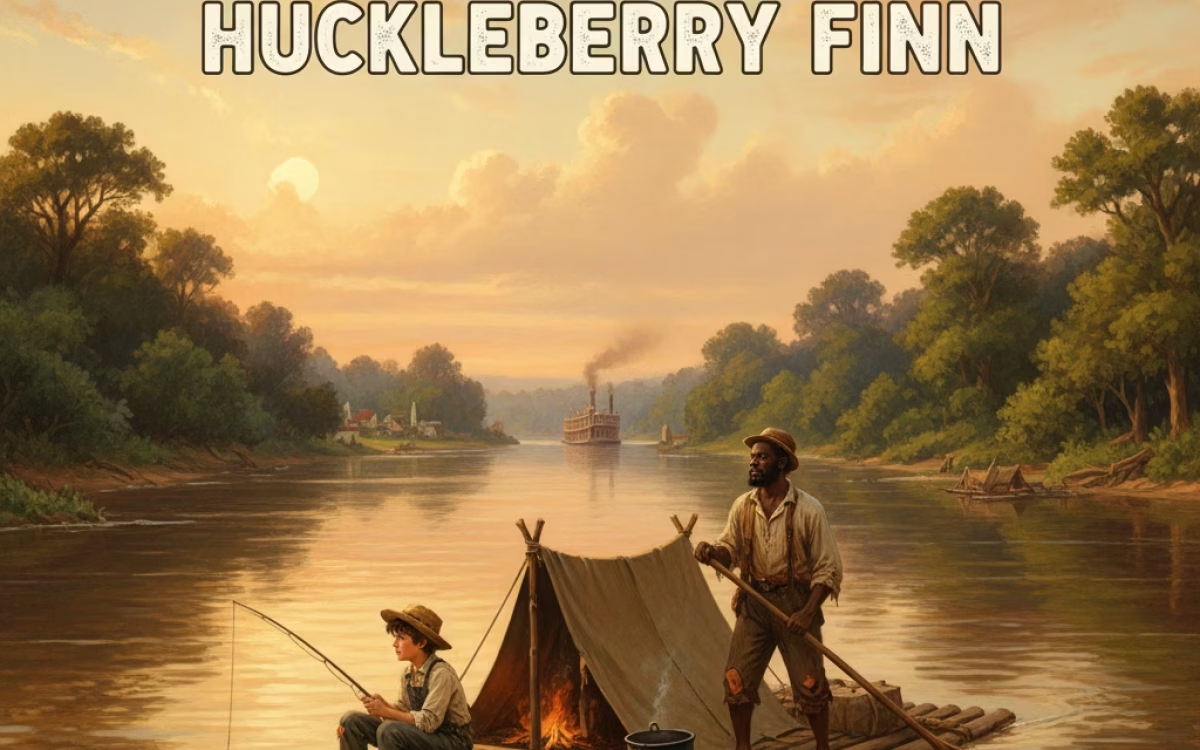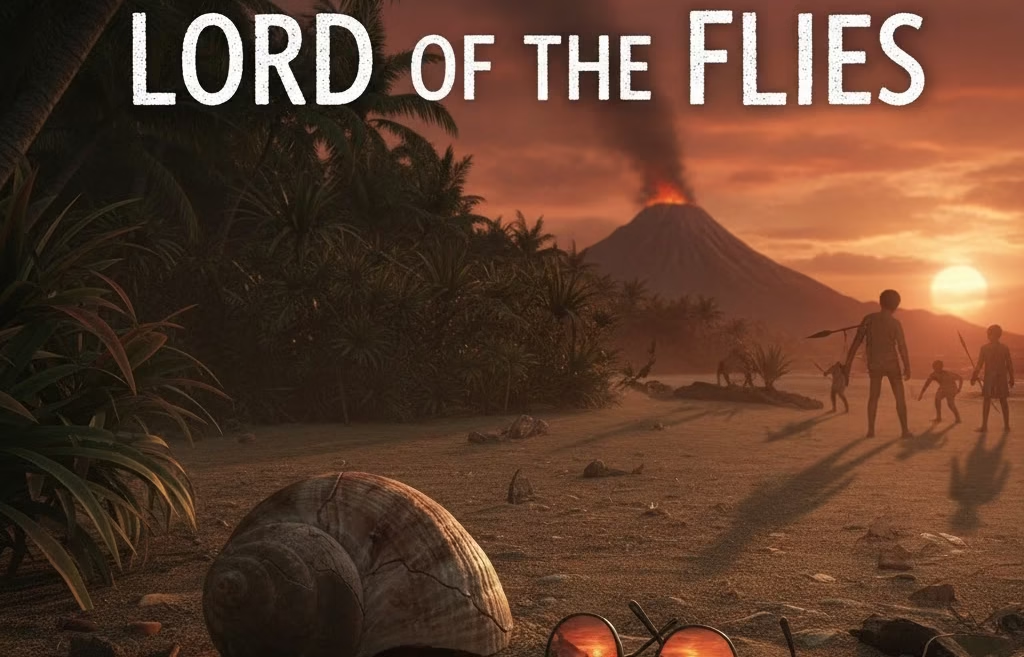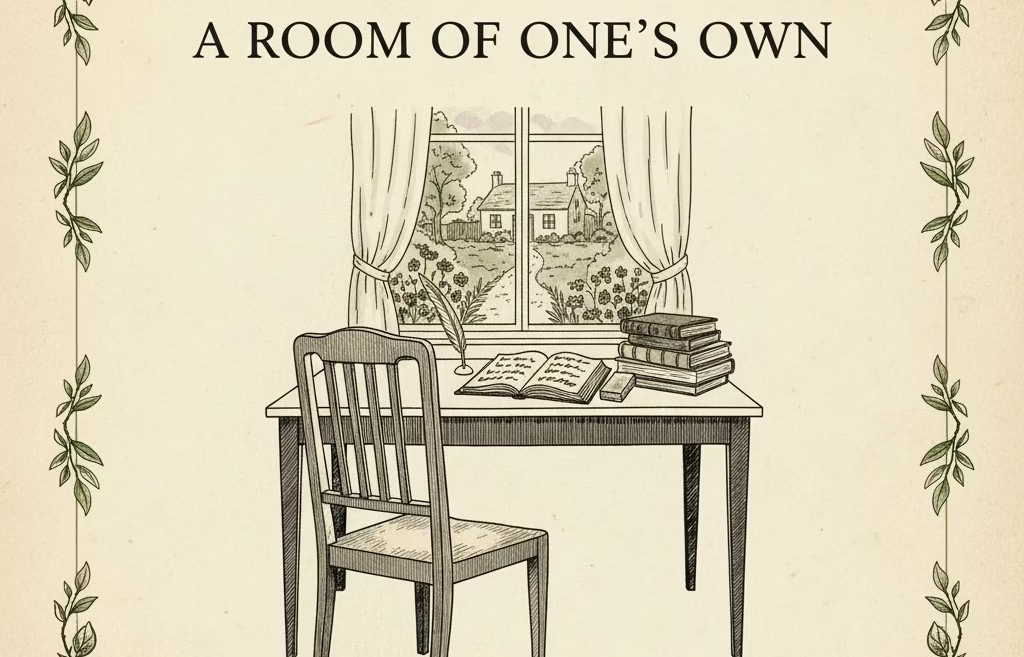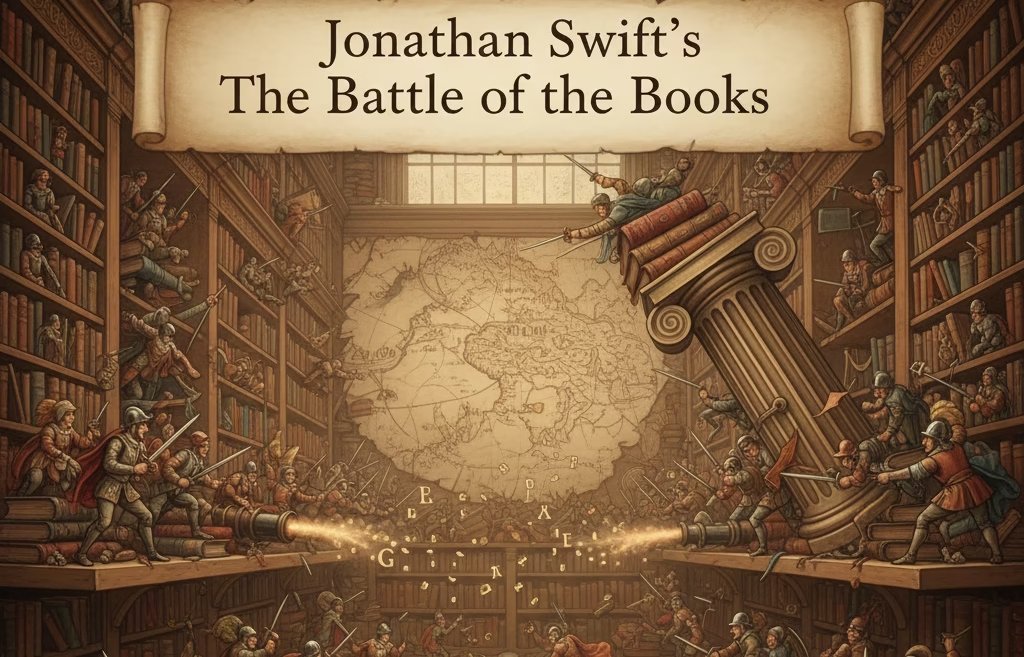Introduction
There are few works in American literature as bold, controversial, and inventive as Mark Twain’s The Adventures of Huckleberry Finn. At first glance, The Adventures of Huckleberry Finn seems like a simple adventure story—a young boy running away from home, drifting down the Mississippi River on a raft with an escaped slave. But beneath this surface lies a much deeper book. Twain’s novel quickly transforms into a sharp social satire, a challenge to America’s conscience, and a rich text that continues to spark debate in classrooms and literary circles. The river that carries Huck and Jim away from “civilization” is more than just a setting. It acts as a powerful force that exposes hypocrisy, questions morality, and invites readers to reflect on whose freedom truly matters.
As a lifelong literature enthusiast and educator, revisiting this novel feels like meeting an old friend who never fails to surprise. Each time, new ironies emerge, forgotten jokes come to light, and incisive critiques bite deeper. Twain’s voice is vibrant—full of energy, wit, and a rebellious honesty that remains fresh even after more than a century. Somehow, despite—or perhaps because of—its discomforts, The Adventures of Huckleberry Finn endures as essential reading for anyone interested in the complicated intersections of race, youth, and the American dream.
Mark Twain’s Huckleberry Finn: Unconventional Hero
Mark Twain’s gift lies in choosing an unlikely narrator. Huck—a poor, uneducated, “uncivilised” boy—speaks with slang, runs from home, and, with Jim, subverts expectations at every turn. Their misadventures expose the weaknesses of “respectable” society, from hypocrisy and cruelty to narrow-mindedness and mindless conformity. Huck’s irreverence, his skepticism about adult motives, and his comic voice draw readers in… but also set a trap. Through Huck, Twain forces us to face our own assumptions—about virtue, race, and the things we call “normal”. FULL TEXT
Mark Twain’s Huckleberry Finn: Analysis
What makes the novel “tick”? Twain employs Harper Lee-level narrative trickery, using Huck’s naive perspective to force readers into uncomfortable places. Huck is not a classic hero—he’s poor, scrappy, and anarchic, and his dialect-laden narration both imbues the story with authenticity and cleverly distances the reader from the pretensions of polite society. Twain’s genius lies in presenting the world through Huck’s eyes, drawing readers into scenes of humour and horror, and forcing them to recognise the contradictory moral climate of antebellum America.
Comic Underbelly: The book is frequently funny, laced with pranks, misunderstandings, and the earthy speech of its youthful protagonist. Twain’s humor, though, is never just for laughs. It is used to undermine the false gentility of society and expose the absurdities of race, religion, and property.
Satirical Strategy: Clever satirical passages pepper the novel, skewering everything from “good society” to religion. The entire structure of Huck’s journey—rafting away from civilisation, encountering one eccentric or corrupt adult after another—serves to highlight the failures of American ideals.
Racial Commentary: Twain’s portrait of Jim and the evolving relationship between the two runaways is fraught with irony and pathos. Jim becomes a fully realised character, challenging not only Huck’s ingrained beliefs but the reader’s as well. The biting humour and unsettling scenarios demand readers reconsider entrenched social ideas.
Mark Twain’s Huckleberry Finn: Themes
Freedom and Conscience
At its core, The Adventures of Huckleberry Finn is about freedom—physical, emotional, and moral. Both principal characters are seeking emancipation: Huck from the constraints of “civilisation”, abusive guardians, and enforced religion; Jim from literal enslavement and the threat of family separation. Huck’s internal struggle reveals a deeper message: to truly be free, one must confront inherited notions of right and wrong. The moments when Huck chooses to help Jim, even at risk to himself, illustrate the potential for “private” morality to triumph over societal dictates.
Satire of Society
Few works lampoon rural society so sharply. Whether it’s the self-righteous Widow Douglas, the feuding Grangerfords and Shepherdsons, or the ridiculous pretensions of the Duke and King, Twain skewers “respectability” at every turn. His message is clear: the veneer of polite society often covers profound injustice and cruelty.
Coming-of-Age
On another level, this is a classic Bildungsroman—a story about growing up. Huck’s movement from self-preservation to solidarity, from childish pranks to the recognition of another’s humanity, becomes a roadmap for moral growth. The tension between what society teaches and what one’s experience reveals is at the heart of Huck’s transformation.
Hypocrisy and Prejudice
Twain attacks the hypocrisy of adults who claim virtue while perpetuating or ignoring cruelty. The most powerful example is the treatment of Jim: seen alternately as property and as a beloved friend, Jim’s shifting status exposes the contradictions of American identity.
Mark Twain’s Huckleberry Finn: Critical Review
Plot Overview
Set in the pre-Civil War South along the Mississippi River, The Adventures of Huckleberry Finn is ostensibly a sequel to The Adventures of Tom Sawyer, though it quickly breaks away in tone and intent. Huck, recently adopted by the Widow Douglas, finds himself uncomfortable with the restrictive expectations of “civilized” life. His alcoholic father, Pap, returns and kidnaps him, holding him in a remote cabin. Huck’s escape and eventual meeting with Jim, a runaway enslaved man, sets them both on a journey down the river, seeking freedom.
Jim’s goal is to reach the free states, where he could buy the freedom of his enslaved wife and children. Their raft becomes both sanctuary and symbol, drifting past shorelines that brim with danger and opportunity. Along the way, they encounter murderers, feuding families, wrecked steamboats, lynch mobs, and a seemingly endless procession of scoundrels – none worse than the “Duke” and “King,” two con men whose fraudulent schemes pull Huck and Jim deeper into trouble.
Huck’s Moral Journey
What makes Huck’s journey so compelling is not just the exciting variety of his adventures but also his growing awareness of Jim’s humanity. Huck is raised in a society that teaches him to see Jim as mere property. This background forces him into difficult and painful decisions. Often, Huck feels he is committing a “sin” by helping Jim escape to freedom. The novel’s most powerful scene captures this struggle perfectly: Huck, believing he is damned for aiding Jim, tears up a letter he had written to betray his friend. In doing so, he declares, “All right, then, I’ll go to hell!” This moment marks a turning point—a time when Huck’s personal conscience rises above the social rules imposed on him.
Satire and Irony
Twain’s use of irony is relentless. Time and again, the adults Huck meets are vain, foolish, or cruel. Perhaps the most striking example is the Grangerford-Shepherdson feud, a parody of Southern honor that leads to pointless violence, or the repeated “revivals” and church going, contrasted with venality and duplicity outside the chapel doors. Even the climax, which involves Tom Sawyer’s theatrical and unnecessary complications in freeing Jim, is laced with irony. Tom, unlike Huck, plays at adventure without real moral stakes, making light of Jim’s ordeal.
Ending and Its Discontents
The novel’s ending remains polarizing. Some critics have argued that Tom’s return and the prolongation of Jim’s captivity demote Jim’s agency and trivialize the pain of slavery. Others see it as a further critique of childish romanticism versus real moral progress. Yet, the image of Huck “lighting out for the territory ahead of the rest” powerfully conjures the problem of belonging in an unjust world—the perpetual outsider, refusing the compromises of adult life.
Mark Twain’s Huckleberry Finn: Critical Reception
Initial Reception
Upon publication, the novel was both lionized and censured. Critics objected to its “coarseness,” the unvarnished dialect, and what was seen as a lack of “moral fiber.” Many libraries banned the book outright. The depiction of Jim, and Twain’s repeated use of racial slurs, remain sources of discomfort and debate.
Modern Criticism
Modern scholars are divided: some praise Twain for exposing the contradictions and cruelties of racism; others fault the novel for perpetuating stereotypes, especially in the “evasion” sequence where Jim’s independence is sacrificed for Tom Sawyer’s whimsy. Yet, the astonishing complexity and emotional depth of Twain’s characters transcend the constraints of their era. Jim’s dignity and resilience shine through, even in humiliation.
Enduring Impact
The Adventures of Huckleberry Finn has left an indelible mark on literature, not least for its stylistic innovations—the use of vernacular speech, unreliable narration, and episodic structure foreshadow modernist and even postmodernist storytelling. Furthermore, the novel has been a touchstone for writers ranging from Hemingway (who declared, “All modern American literature comes from one book by Mark Twain called Huckleberry Finn”) to Toni Morrison, who both honors and challenges its legacy.
Mark Twain’s Huckleberry Finn: Analysis of Setting
The Mississippi River as Metaphor
The setting is not mere backdrop; it’s a living, shifting force. The Mississippi River is both sanctuary and danger, escape route and prison. When the characters are on the raft, a fragile peace prevails—free from the corruptions of the towns and plantations that line its shore. But the river is unpredictable: storms, fog, and passing steamboats constantly threaten disaster.
The river’s appeal is existential. It represents a liminal space between the rigidities of society and the uncertainties of freedom. Twain’s best descriptions blend the lyric with the comic—fireflies at night, the play of light on the water, the suspense of drifting in the fog. The contrast between “the shore” (often dangerous, ruled by hostile whites) and “the river” (a fragile, shifting refuge) is central to the novel’s emotional logic.
Mark Twain’s Huckleberry Finn: Comic Devices
Twain’s Use of Humor and Irony
Twain’s narrative voice is mischievous, never missing a chance for a joke at someone’s expense—often Huck’s own. The rough humor of the scenes with Pap Finn, or the low farce of the Duke and King, is balanced by moments of real tenderness: Jim’s protectiveness, Huck’s slow emergence as a friend.
Irony is present everywhere—the reader is frequently aware of the truth behind Huck’s misunderstandings, especially his misreading of adult intentions. The language both distances and implicates readers, as they realize that the “innocence” of youth can challenge or perpetuate adult prejudices. EXPLORE MORE AUTHORS
Conclusion:
The conclusion of The Adventures of Huckleberry Finn remains deliberately unresolved. This mirrors the complex moral and social tensions that lie at the heart of the novel. With Jim’s freedom secured and Pap no longer a threat, Huck stands at a crossroads. He could settle into a “civilized” life with the Phelps family or return home. Instead, he chooses to “light out for the Territory.” This decision—rejecting society’s constraints to seek the unknown—cements Huck as a symbol of American independence and restless spirit. Yet, it also raises questions about the limits and consequences of individualism.
The ending carries a poignant irony. Despite Huck’s remarkable moral journey, the world around him remains largely unchanged. Jim’s emancipation is revealed as a technicality, more an accident of paperwork than true justice. Meanwhile, the broader system of inequality continues to persist. Moreover, the return of Tom Sawyer and the playful antics involved in Jim’s escape show how real struggles for freedom can be trivialized or absorbed by society’s need for adventure and order. Twain both celebrates Huck’s longing for freedom and critiques a culture that too often transforms liberation into mere play, ignoring its deeper responsibilities.
Ultimately, the novel’s ambiguous ending reminds readers that social progress and personal growth are never truly complete. Huck’s choice to venture into new territory—rather than accept the comforts of civilization—leaves us with a sense of ongoing journey. It invites each new generation to wrestle with the unresolved moral and social questions Twain so masterfully exposes.
Frequently Asked Questions
Q1: What is “The Adventures of Huckleberry Finn” about?
The novel follows Huck Finn, a young boy escaping his abusive father, and Jim, a runaway slave, as they journey down the Mississippi River. Their quest for freedom challenges societal norms and exposes the hypocrisy of the antebellum South.
Q2: Do I need to read “The Adventures of Tom Sawyer” first?
No, the story stands on its own, though it features characters from “Tom Sawyer.” In fact, some readers find that reading “Huckleberry Finn” without knowing Tom Sawyer gives a more independent experience of the story.
Q3: What makes Huck Finn a unique character in literature?
Huck’s naive narration, resourcefulness, sense of humor, and internal moral struggles differentiate him from typical literary heroes. His perspective exposes adult hypocrisy and forces readers to question their own beliefs.
Q4: What is the symbolic importance of the river?
The Mississippi River is a symbol of freedom, adventure, and moral ambiguity. For Huck and Jim, the river serves as both refuge and peril, representing their wish to escape society’s restrictions.
Q5: What are the major themes in the novel?
Major themes include the conflict between society and conscience, childhood innocence, racism, satire of social institutions, and the search for freedom.





